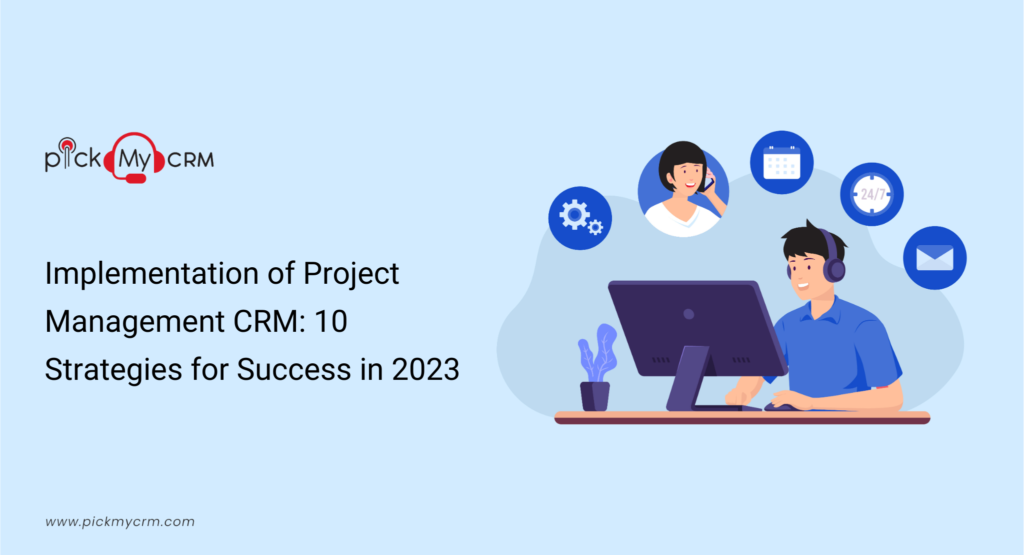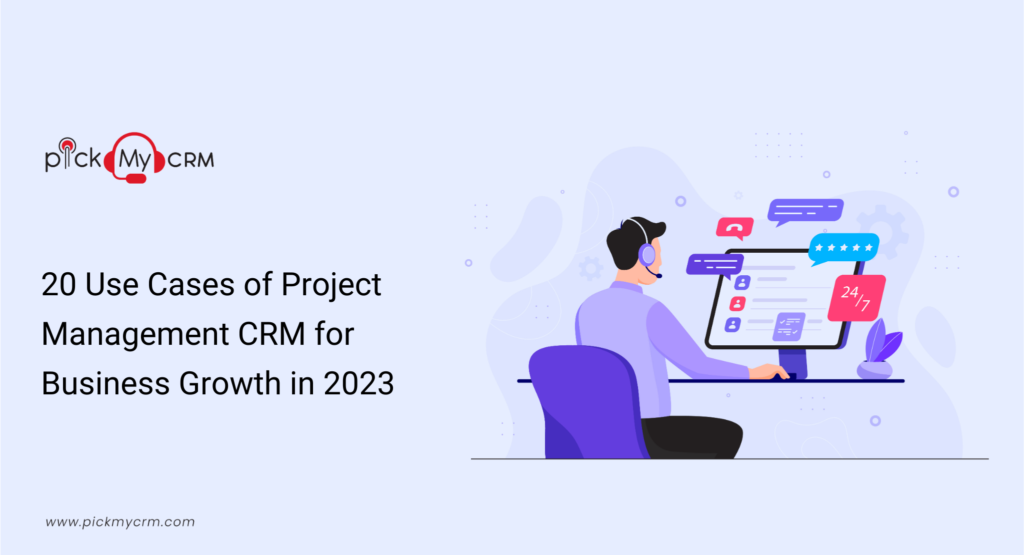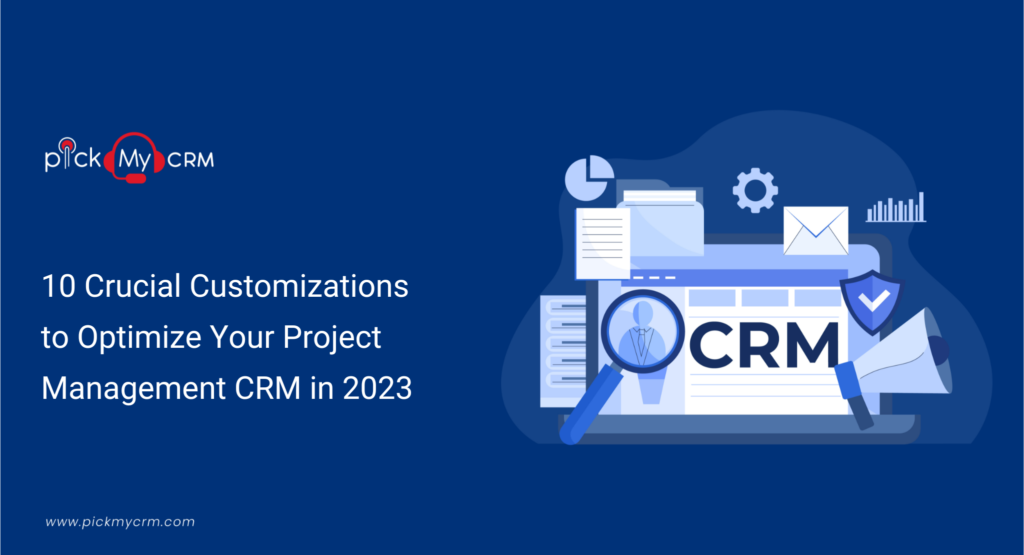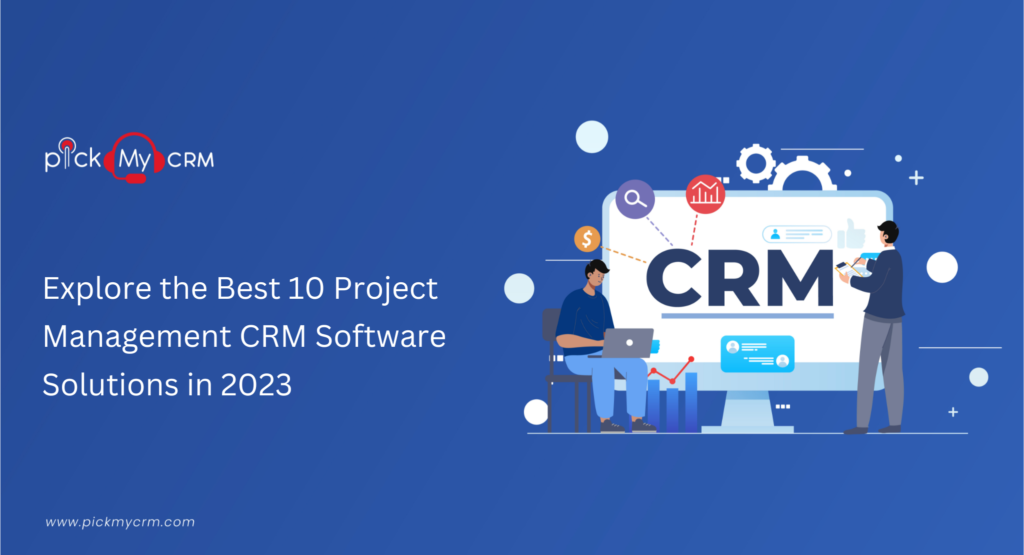Implementation of Project Management CRM: 10 Strategies for Success in 2023

Recent Stats on CRM Implementation
Before diving into the intricacies of CRM implementation, let's take a moment to explore some recent statistics that highlight the significance of this strategic move:- According to a survey conducted by Deloitte, 91% of organizations with more than 11 employees now use CRM software, reflecting the widespread adoption of CRM solutions in the business world.
- A study by Salesforce reveals that CRM can deliver an average ROI of $8.71 for every dollar spent. This impressive return on investment underscores the financial benefits of CRM implementation.
- As per a Capterra survey, 65% of participants noted an enhancement in sales productivity following the Implementation of CRM systems. This statistic underscores the positive impact CRM systems can have on sales teams.
- The CRM software market is on track to reach $96.51 billion by 2027, highlighting its enduring relevance in diverse industries.
How to Navigate the Implementation Process: Here are 10 Steps
Project Management CRMs have transformed how organizations strategize, execute, and oversee projects. By merging project management functionalities with customer relationship management, these systems offer a holistic approach to project delivery. A recent study reveals that companies leveraging Project Management CRMs experience a 25% reduction in project timelines and a 15% improvement in overall project success rates.Define Clear Objectives and Requirements
Defining clear objectives and requirements involves outlining specific goals and criteria that the Project Management CRM implementation should meet. This step ensures that the CRM solution aligns with the organization's needs, such as enhancing collaboration, streamlining workflows, or improving client interactions.Pondering Integrations
Integrations are the bridges that unite your CRM system with your existing software tools, creating a harmonious and efficient technology ecosystem. This essential step involves evaluating your organization's requirements, selecting crucial integration points, and strategizing how the CRM will seamlessly fit into your current software landscape.- Identify Integration Needs: Determine which Departments and Processes could benefit most from integration. Consider tools like ERP systems, marketing platforms, and communication apps.
- Prioritize Integration: Highlight integrations that are essential for your workflow. For instance, if email marketing drives your strategy, focus on CRM-email platform integration.
- Evaluate Available Solutions: Research CRM options with existing integrations or app marketplaces for add-ons that align with your requirements.
- Custom Solutions: If needed, develop custom integrations to match your unique workflow, automating data exchange and enhancing efficiency.
- Workflow Enhancement: Imagine the seamless flow of tasks, automated actions, and instant updates across systems as integrations come into play.
Exploring CRM Options
Choosing the Right Customer Relationship Management (CRM) system is a pivotal step in your project management journey. Exploring CRM options involves meticulous research, comparing features, pricing, and user experiences to make an informed decision that aligns with your organization's needs and goals.- CRM solutions and CRM providers
- Features and Functionality
- Pricing models and Customization options
- User Reviews and User Ratings
- Free trials and Tutorials
- Integration possibilities and User interface
- Scalability and Usability
- Vendor reputation
- Industry Experience and Training Resources
- Customer support and Workflow fit
- Mobile Accessibility and Compatibility
Assembling Your Team
Assembling the appropriate team is pivotal in ensuring a triumphant CRM implementation. Each team member contributes to a smooth, efficient process that aligns with your organization's objectives. Here are the essential considerations when forming your CRM implementation team,- Advocates: Identify strategic communicators who understand CRM's importance.
- Experts: Include CRM-savvy members for technical insights and training.
- Workhorses: Assign technical tasks like data migration and customization.
- Communication: Maintain open channels for seamless information flow.
- Collaboration: Encourage cross-departmental teamwork for comprehensive solutions.
- Roles: Clearly define responsibilities to avoid confusion.
- Leadership: Appoint a project leader for coordination and oversight.
- Expertise: Mix skills from technical to communication for a balanced team.
- Training: Plan for team-wide CRM training to enhance understanding.
- Transparency: Keep everyone informed about progress and challenges.
Setting Metrics and Goals
Defining metrics and goals is a crucial step in the CRM implementation process. This stage involves outlining specific targets and performance indicators that will help you track the effectiveness of the CRM system and measure its impact on your organization. Here's how to set metrics and goals for a successful CRM implementation,- Identify Key Performance Indicators (KPIs)
- Quantify Goals
- Align with Business Objectives
- Set Realistic Targets
- Establish Timeframes
- Implement Data Tracking
- Regular Evaluation
- Feedback Loop
Crafting a Comprehensive Budget
Creating a thorough budget is a pivotal step in CRM implementation. It involves estimating costs for software licenses, customization, training, integration, and ongoing support. Allocate funds for tailored customization to match your unique processes, and consider training expenses to ensure a skilled team. Factor in integration costs with existing systems and anticipate post-implementation maintenance fees. Comparing vendors' pricing structures and assessing potential ROI will help make informed decisions, while a well-crafted budget ensures financial transparency and paves the way for a successful CRM integration.Data Preparation and Cleansing
Before implementing a CRM system, thorough data preparation and cleansing are essential. During this phase, your focus shifts to reviewing, organizing, and refining your current data, guaranteeing its accuracy and uniformity. Here's how to effectively prepare and clean your data for a successful CRM implementation,- Data review and Data organization: Examine existing data for duplicates, inaccuracies, and inconsistencies. Categorize and segment data for relevant workflows and interactions.
- Data cleansing: Remove duplicates, correct errors, and eliminate outdated information.
- Data migration: Meticulously plan to facilitate a seamless data transition from previous systems to the CRM.
- Data segmentation: Segment data for targeted marketing and efficient workflow management.
- Accuracy and Consistency: Ensure data entering the CRM is of the highest quality for accurate insights. Establish data consistency to enable uniform reporting and analysis.
- Accessibility and Importance: Ensure seamless user access to data within the CRM system. Recognize that clean and well-organized data forms the foundation for CRM success.
- Regular maintenance: Incorporate practices for ongoing maintenance to uphold data accuracy and currency.
Onboarding and Training
The onboarding and training phase is a pivotal element of successful CRM implementation. In this phase, the emphasis pivots towards equipping your team with essential knowledge and skills for Proficiently leveraging the new CRM system. Comprehensive educational sessions introduce users to the CRM's features and functionalities, ensuring a solid grasp of its capabilities. Training is tailored to various user roles, allowing each team member to master the aspects most relevant to their responsibilities. Practical hands-on exercises build user confidence and proficiency, fostering a deeper understanding of the CRM interface. User guides, manuals, and online resources provide ongoing reference for continuous learning and troubleshooting. Feedback channels and technical support ensure a smooth onboarding process, empowering users to seek assistance and share insights. Ongoing workshops and training sessions keep users updated on new features, enhancing their skill set and maximizing the CRM's potential. Recognizing milestones achieved during onboarding through positive reinforcement inspires motivation and engagement. A well-informed and empowered team serves as the driving force behind CRM success, optimizing operations and fostering overall business growth.Initial Rollout
The initial rollout marks the beginning of your CRM implementation journey. This phase involves introducing the CRM system to a select group within your organization before adoption. Here's how to ensure a successful initial rollout,- Targeted Testing: Choose a Specific user group for controlled testing and feedback collection.
- Probation Period: Set a trial phase to address challenges and gather insights before full deployment.
- Managed Feedback: Communicate that the initial rollout is for testing, encouraging user feedback.
- User Training: Provide thorough training to ensure users are comfortable with CRM features.
- Refined Implementation: Use insights from the initial rollout to optimize the CRM for broader adoption.
Analyzing Results and Gathering Feedback
Following the initial CRM rollout, the journey continues with result analysis and feedback collection. This phase involves assessing CRM performance and gathering user insights for informed refinements. Here's how to effectively drive continuous CRM improvement,- Data-driven Evaluation: Measure CRM impact using Defined KPIs like efficiency and customer satisfaction.
- User Feedback: Engage users for experiences, pain points, and enhancement suggestions.
- Feedback Channels: Establish dedicated channels such as surveys or meetings for user insights.
- Iterative Refinement: Apply feedback for incremental improvements and better user experiences.



